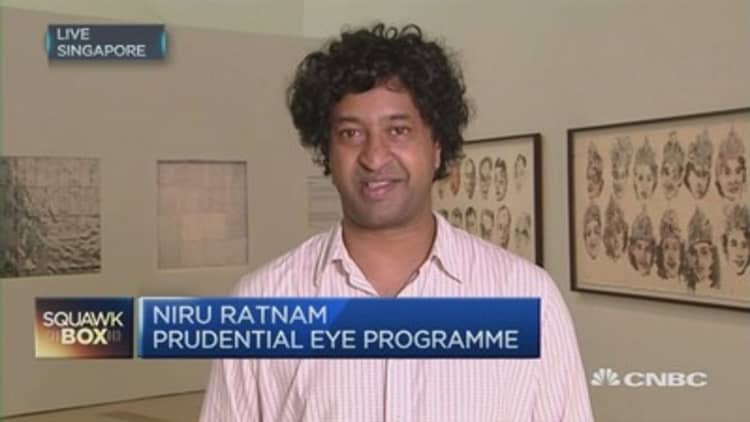Southeast Asian art is increasingly attracting critical acclaim but it's lacking a vital element crucial for a healthy market, two of America's most prominent art collectors have warned.
Marc and Livia Straus, founders of the Marc Straus Gallery in New York, told CNBC that private patrons in emerging nations must do more to support local artists.
"In places like Indonesia, there has to be a real understanding by society of the value of art, both by the government and people of wealth," Marc Straus said on the sidelines of Art Stage Singapore, Southeast Asia's annual flagship art fair.
"You do need private patronage. Indonesia has to do that. When they recognize the value of young people who become artists, they'll have a richer society for everybody."
Named one of America's top 100 collectors by Art & Antiques Magazine, the couple started buying contemporary art in the 1960s and are well known for cultivating the careers of prominent artists, including Native American painter and sculptor Jeffrey Gibson. Their world-class collection has been featured in global museums, such as the Museum of Modern Art in New York and the Tate Gallery in London.
Using Southeast Asia's largest economy, Indonesia, as a example, the Straus' noted that cities such as Jakarta and Yogyakarta were teeming with cultural activity but lacked private sector support.
All of the big art museums in New York started out with private patronage and now, the arts is the city's biggest tourist attraction, the couple noted.
Aside from snapping up promising pieces, there are other ways wealthy locals can support the arts community, they explained.
"When people are fortunate enough to put together a collection of art, there's such value in it to helping communities develop," explained Livia Straus.
"By putting art in impoverished communities and helping develop educational programs, you're giving back. You're using art to make a difference, that's the next step."
"That's the challenge based on what we hear friends and acquaintances say in countries like Indonesia. People need to say 'OK, I have this and now I'm going to do something with that will help society grow'."

In 2002, the Straus' founded the non-profit Hudson Valley Center for Contemporary Art in the struggling suburb of Peekskill, New York for those exact reasons. Home to public arts festivals and workshops, the museum is focused on greater interaction between art and residents.
So, what do they look for in a work of art?
"When it comes to understanding art of different cultures, work has to have its own language, it has to resonate with the culture but be universal at the same time," Marc said.
"If it's too hermetic, which is true of artists in every country, then it becomes less interesting for us ... We don't necessarily look for cultural representation in a work. The quality has to hold up, it has to be fabricated well and have an emotional impact."
The couple say they aren't trend-focused and like to seek out unique pieces instead of popular motifs.
"For example, we've gravitated away from Chinese art that we feel is too predictable - there are now certain kind of faces that people expect to see to rubber-stamp it as Chinese art," Marc said.
CORRECTION
This story has been updated to reflect the spelling of the Straus' surname.


